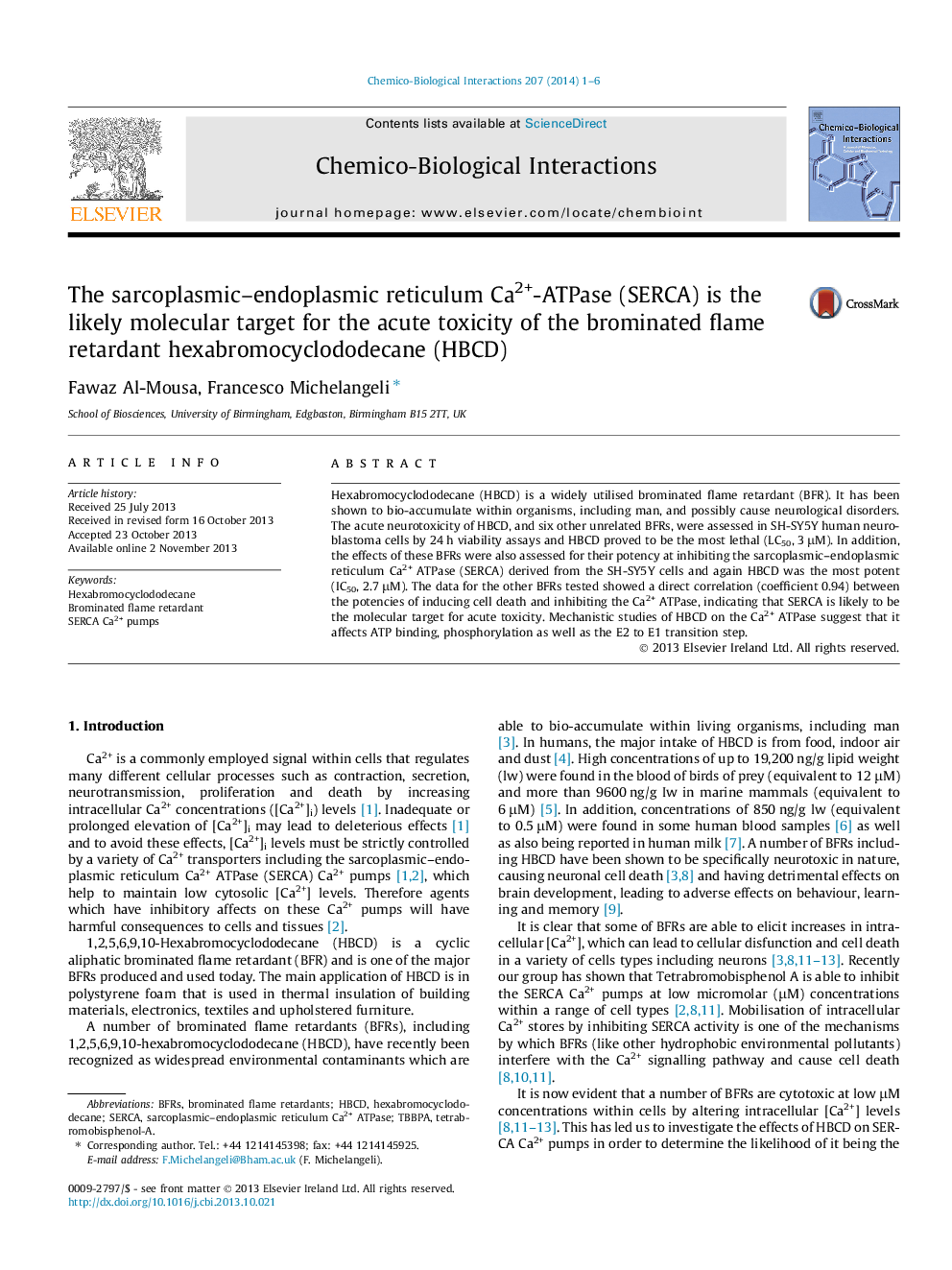| Article ID | Journal | Published Year | Pages | File Type |
|---|---|---|---|---|
| 2580587 | Chemico-Biological Interactions | 2014 | 6 Pages |
•HBCD is the most potent BFR tested to inhibit SERCA Ca2+ pumps.•HBCD is the most potent at inducing death of SH-SY5Y cells.•For a range of BFRs there is a correlation between cell death & SERCA inhibition.•HBCD inhibits ATP binding and the E2 to E1 transition of SERCA.
Hexabromocyclododecane (HBCD) is a widely utilised brominated flame retardant (BFR). It has been shown to bio-accumulate within organisms, including man, and possibly cause neurological disorders. The acute neurotoxicity of HBCD, and six other unrelated BFRs, were assessed in SH-SY5Y human neuroblastoma cells by 24 h viability assays and HBCD proved to be the most lethal (LC50, 3 μM). In addition, the effects of these BFRs were also assessed for their potency at inhibiting the sarcoplasmic–endoplasmic reticulum Ca2+ ATPase (SERCA) derived from the SH-SY5Y cells and again HBCD was the most potent (IC50, 2.7 μM). The data for the other BFRs tested showed a direct correlation (coefficient 0.94) between the potencies of inducing cell death and inhibiting the Ca2+ ATPase, indicating that SERCA is likely to be the molecular target for acute toxicity. Mechanistic studies of HBCD on the Ca2+ ATPase suggest that it affects ATP binding, phosphorylation as well as the E2 to E1 transition step.
